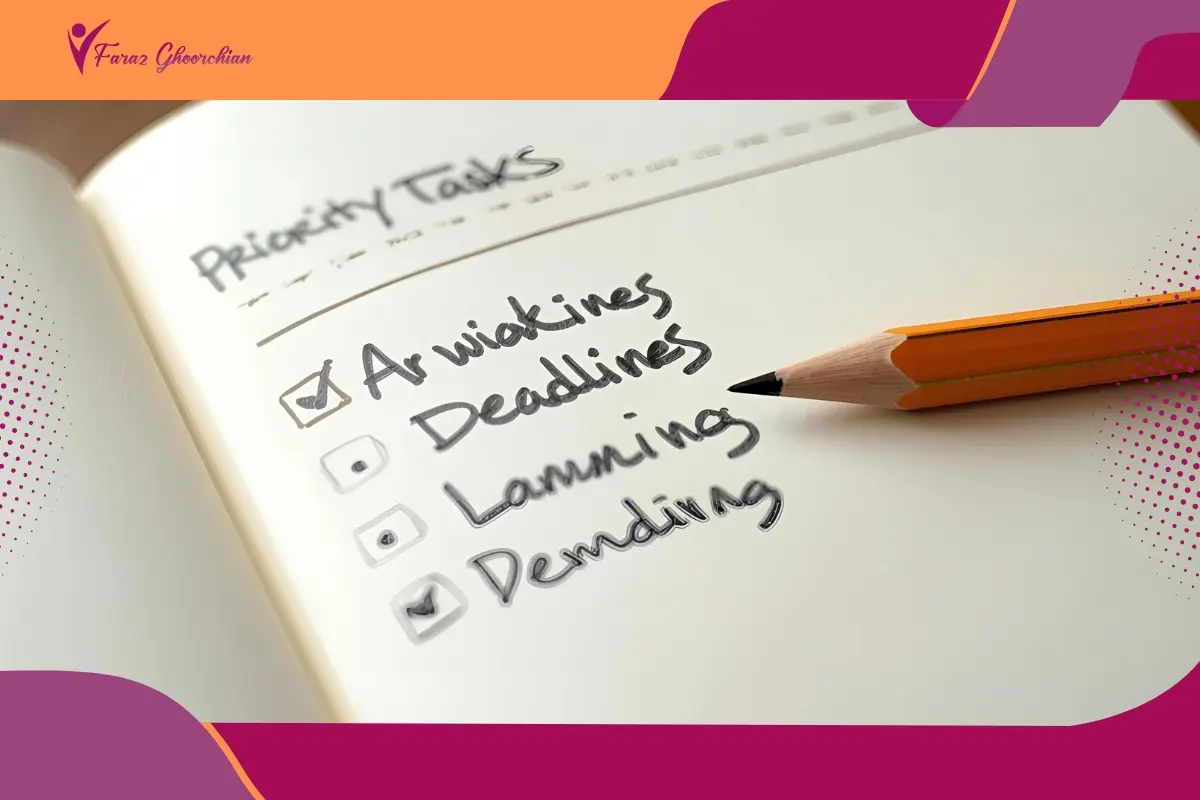Discover a complete guide to understanding the law of attraction, its meaning, psychology, techniques, and examples to manifest a better life.
- 1. Introduction: Why People Seek Understanding of the Law of Attraction
- 2. What is the Law of Attraction?
- 3. How the Law of Attraction Works in Daily Life?
- 4. Core Principles: What Are the 7 Laws of Attraction?
- 5. Exploring the 7 7 7 Method
- 6. How to Understand and Apply the Law of Attraction
- 7. Law of Attraction Choices and Mindset Shifts
- 8. Psychology of Manifestation and Real-Life Examples
- 9. Transformation Stories: How the Law of Attraction Changed My Life
- 10. Conclusion: The Future of Law of Attraction and Manifestation
Introduction: Why People Seek Understanding of the Law of Attraction
People seek understanding law of attraction for practical reasons: they want a clear way to connect intentions with daily choices and results. Many arrive after small wins or frustrating setbacks and begin asking what is law of attraction in real life, not as a slogan but as a method. They look for language to focus goals, filter distractions, and build routines that match their values. They also want a simple test: try a new thought pattern for a week, track behavior, notice outcomes, then adjust. This curiosity blends hope with accountability. When readers grasp how attention shapes decisions, they see why gratitude journals, visual cues, and honest self-review improve momentum. The appeal is agency, not magic, and a calm plan for moving forward.
What is the Law of Attraction?
At its simplest, the law of attraction definition describes how focused attention and emotion guide perception and shape choices. When people ask what is law of attraction, they are really asking how thoughts translate into behavior that moves results. A clear goal acts like a lens. It nudges someone to notice the right email, follow up on a warm lead, or practice a skill a little longer. The process is not instant change. It is steady alignment between what a person holds in mind and what they do each day, which is why many teachers emphasize Why habits are important to success.
From a research informed angle, law of attraction psychology examines how expectation, imagery, and self talk prime the brain to spot relevant cues and sustain effort. The law of attraction meaning becomes practical when intention is paired with routines that can be measured. People write a few lines of gratitude at night, picture tomorrow’s key moments in the morning, and track one behavior that supports a goal. Attention narrows, confidence grows through small wins, and decisions become easier. Over time the pattern looks less like luck and more like consistent preparation meeting timely opportunity.
How the Law of Attraction Works in Daily Life?
- They begin by naming a clear aim and pairing it with a feeling. That is law of attraction how it works in practice: attention plus emotion sets the day’s filter and guides what gets noticed.
- Next, they map one small action to that aim. This is how to use the law of attraction without mystique: calendar blocks, prompts, and tiny commitments that compound into visible progress.
- They design cues that pull focus. Vision boards, lock-screen notes, and morning scripts are law of attraction techniques that help the brain prioritize signals and reduce friction during busy hours.
- When options appear, they make law of attraction choices by asking if a task moves them closer to the aim. They say no to noise and yes to preparation, practice, and steady follow through.
- They pair calm breathing with visualization so effort feels rewarding. Law of attraction and manifestation meet when emotion energizes consistent behavior and keeps motivation stable.
- They close the loop with simple logs and Law of attraction examples such as one outreach sent, ten minutes of study, or a healthier meal. The record shows progress and keeps understanding law of attraction grounded, turning intentions into Daily habits for success.
Core Principles: What Are the 7 Laws of Attraction?
Below is a practical read of What are the 7 laws of Attraction, shaped for everyday use and clear decision making.
- Clarity: Name a single outcome, choose one metric, and write the first step. Specifics turn a hope into a plan people can follow.
- Emotion: Pair the goal with a felt sense of success. In practice, calm imagery and gratitude help attention stay steady, a point often noted in law of attraction psychology.
- Belief: Act as if progress is expected. That is law of attraction how it works at street level: expectation nudges preparation, follow up, and patience.
- Alignment: Let values guide choices. When a task fits who someone wants to be, discipline feels lighter and consistency lasts longer.
- Action: Use simple law of attraction techniques like morning visualization, three priority tasks, and a two minute start to lower friction.
- Receptivity: Stay open to better routes. If a plan stalls, adjust the step size or the timeline while holding the aim.
- Contribution: Share progress, ask for feedback, and offer help. Networks mirror energy; generous behavior often brings timely information and real opportunities.
Exploring the 7 7 7 Method
The What is the 7 7 7 law of attraction? method is a simple routine built around repetition and emotional focus. Choose one clear intention, write it 7 times in the morning, revisit it with 7 vivid breaths at midday, and repeat the writing 7 times at night for 7 days. It is a tidy way to practice how to use the law of attraction with structure instead of guesswork.
To keep it grounded, pair the practice with measurable cues. Set calendar reminders, define a tiny daily action, and log results. This turns understanding law of attraction into a trackable habit rather than a vague wish. In that light, the law of attraction definition becomes practical: attention guides choices, and choices shape outcomes.
If progress stalls, simplify the sentence, shorten the visualization, or align the intention with one specific scenario for the week. Ask again, What is the 7 7 7 law of attraction? It is a focused cycle that trains attention, keeps emotions steady, and helps behavior line up with the goal.
How to Understand and Apply the Law of Attraction
How to understand the law of attraction? Start with a simple cycle that anyone can test. A person names one clear outcome, defines the smallest repeatable behavior that supports it, and sets a cue that makes the behavior hard to miss. They run this plan for seven days, record what actually happened, and adjust the next step. The idea is to translate intention into visible preparation so attention, emotion, and effort point in the same direction.
Application works best when routines are concrete. Mornings hold a brief visualization and one priority action, afternoons include a progress check, and nights capture a two line reflection. This is how to use the law of attraction in real life, not as a slogan but as a practice that compounds. Friction drops when the environment is shaped in advance, like laying out gym clothes or prepping a call list. For extra structure, many turn to books on habits of successful people to refine prompts and tracking sheets, then review results weekly and scale what worked.
Law of Attraction Choices and Mindset Shifts
Mindset shifts start with small decisions repeated on purpose. In practice, law of attraction changed my life is the phrase people use after they treat attention as a filter and behavior as proof. They set a simple rule for law of attraction choices: if a task moves the goal forward, it stays; if not, it goes. This reduces noise, protects energy, and turns vague hopes into clear next steps that can be tracked and improved.
Application works best when routines are concrete and easy to start. People pick two law of attraction techniques that suit their day, such as a morning visualization and a two line evening review. They then map how to use the law of attraction to a calendar block, a visible cue, and one measurable action. When motivation dips, they revisit how to change your mindset for success and adjust the step size, keeping progress steady without relying on bursts of willpower.
Psychology of Manifestation and Real-Life Examples
In plain terms, the mind learns what to look for. Expectation narrows attention, imagery rehearses the moves, and calm emotion keeps effort steady when tasks feel awkward. Researchers describe this as priming and implementation intentions, but the feeling is simple: decide, picture, then act. When intention and routine line up, law of attraction and manifestation stops sounding mystical and starts looking like good training. A person names the next small step, sets a cue, and repeats it until confidence grows from evidence rather than hype.
Real life makes the idea easier to trust. A salesperson spends two quiet minutes picturing a warm opening line, calls five prospects, and records the outcomes. A student blocks forty minutes, silences notifications, finishes one problem set, and notes what improved focus. A runner places shoes by the door at night, jogs the first kilometer after waking, and logs distance in a notebook. These Law of attraction examples look modest on paper, yet they compound fast. Attention picks the target, preparation reduces friction, and repetition turns a decision into a habit that steadily moves results in the right direction.
Transformation Stories: How the Law of Attraction Changed My Life
In real transformations, the shift is visible in calendars, not just quotes. A product designer credits small daily experiments for the feeling that law of attraction changed my life. She wrote one clear intention each morning, rehearsed a confident client call for two minutes, and followed through on a single outreach. A young teacher asked, How to understand the law of attraction? He treated it as a training plan, not a charm. He pictured one calm class, prepared a three line lesson prompt, and logged what worked. After a month, both noticed fewer stalled days and more timely chances because their attention finally matched their actions.
Lasting change came from structure. They set reminders, simplified choices, and reviewed results on Sundays. When energy dipped, they reduced the step size instead of quitting. They kept a visible proof list of wins so motivation had evidence to lean on. Each story shows the same arc: clear aim, emotional rehearsal, tiny action, honest review. The pace is steady rather than dramatic, which is why it lasts. With that rhythm, building habits for success stops being a slogan and becomes a checklist that carries goals from intention to consistent results.
Conclusion: The Future of Law of Attraction and Manifestation
The next wave of law of attraction and manifestation looks refreshingly practical. Expectation will sit beside habit design, so a short visualization leads into one measurable action and a brief evening review. As attention training and emotion regulation get clearer, people will build smaller steps, tighter cues, and faster feedback loops that make progress feel steady. Communities will replace slogans with shared proof lists, weekly check ins, and firsthand lessons that travel faster than theory. In this setting, understanding law of attraction becomes a skill set rather than a slogan: choose a precise aim, rehearse the moment that matters, and act in a way that can be tracked and improved. Over weeks, evidence shapes belief, and consistent preparation meets timely opportunity.















